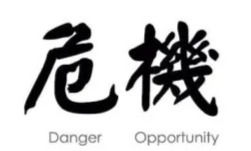The blind spot of becoming fully transactional in times of crisis
- Shahani Initiatives
- Apr 12, 2020
- 4 min read
Updated: Jun 10, 2023
While navigating through crisis situations, organizations are compelled to find a new balance between the “Transactional” activities and the “Transformational” activities.

“Transactional” activities are the day-to-day activities that are performed for the organization to keep running smoothly such as supply chain, production, logistics, customer service, employee payroll, etc.
“Transformational” activities are those that build or improve capabilities. These activities impact the processes, organization, technology and the “best practice” behaviors required for the transformation to occur and be sustained.
Transformation is achieved through the disciplined articulation and execution of projects using proven methodologies and tools.
Under normal circumstances, the amount of resources assigned to transactional or transformational activities is budgeted and planned for, driven by the needs of the business and market conditions. However, when a crisis hits, priorities suddenly change.
Understandably, there is more concern with keeping the business running and meeting the immediate needs of operations, customers, providers and employees. The cash flow is challenged, “unnecesary” expenses are cut, headcount is reduced, etc. Suddenly, the transactional activities become the priority and transformational projects are put on the back burner.
The challenge is to continue to manage a healthy balance between the transactional and the transformational activities during the crisis. Why? Here are my thoughts:
Becoming fully transactional puts your business at a disadvantage vs. competitors. Your business is not an isolated entity. It competes with others and before the crisis hit, you had identified transformational changes that needed to be implemented in order to maintain or improve your competitive edge. Sure, in a crisis you need to first guarantee the continuity of your “business as usual” but if you completely halt all of the initiatives that were there to improve your medium and long-term competitive position, where is that going to leave you vis-a-vis your competitors when the crisis is over? Instead of a full-stop approach, think about prioritizing and executing on the key transformational projects during the crisis in order to be better positioned against your competitors when the crisis is over. You may need to delay or slow down some projects but do not cancel any.
If your projects are truly transformational, they’re also non-disposable. This ties into my last point of delaying and not cancelling them. Remember the strategic conversations and the decision-making process that you conducted when you determined and approved the transformational projects? You reviewed budgets, you assigned resources, you hired consultants, you trained people, you adopted best practices, etc. All this was done in order to better execute on the transformational projects and improve your business. During the crisis, do not forget this plan. Of course, the cash flow has to be managed. But do not make the mistake of considering that the cash flow needed for the transformational projects is an “unnecessary expense”. It was originally thought of as an investment and continues to be so. If you stop the projects completely you will lose the expected return on investment. It will be difficult and costly to start again when the crisis is over and in the meantime it is likely that people will forget what they learned, you will create a history of “failed projects”, and people will go back to their “comfort zones” and become more resistant to change. You will send a message to the organization that “transformation” is not a priority. If you believe Peter Drucker’s famous words “innovate or die”, you’ll understand the need to continue transforming the business during the turmoil.
Where to stay the course. The real challenge then becomes, determining which projects are postponed (because you might not be able to keep them all fully on-track). If you consider that all your transformational projects are considered important when they were approved, how can you decide which ones to postpone? A prioritization exercise (e.g. business impact vs. ease of execution) would be appropriate. During this analysis you should remember that the crisis will eventually be over and when it is, you’ll need to be better positioned to compete as market conditions improve. Transformational projects impact market position, differentiation, customer service, employee retention, effectiveness, efficiency, etc. Determine which transformational projects are absolutely critical for your business during and after the crisis. Prioritize and execute on these.
Every crisis is an opportunity. We’ve all heard that the Chinese symbol for crisis is made up of two elements: Danger and Opportunity. When figuring out your response to the crisis, do not forget to look at the opportunity angle. This could be the perfect time to execute on transformational projects. Compare this to the stock market. The best time to buy is when the market is down which typically happens when there is a crisis. You may have employed providers for your projects. These providers would most certainly be willing to re-negotiate terms during the crisis period. This could be the perfect time to activate your growth strategy, there could be attractive acquisitions in the marketplace. The crisis may have provoked a need to re-invent your business. The “why” you are transforming is much more apparent and easy to communicate and understand in the middle of a crisis. This will better drive execution. All this requires transformational thinking which must be encouraged, rather than put on hold, especially during times of crisis.

In conclusion: When a crisis hits, don’t be blind-sighted by the urgency of transactional continuity. Yes, ensure transactional efforts immediately, but keep the transformational fire burning… even turn it up as you see the opportunity. Do not turn it off completely.
Comments